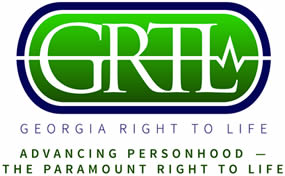 “Please help me I’ve done a terrible thing. Please tell me there’s a chance to save my baby.”
“Please help me I’ve done a terrible thing. Please tell me there’s a chance to save my baby.”
“I don’t want this abortion. Can you help me make it stop?”
“Do I have any options? I want this pregnancy and I took the first pill already.”
“I called the abortion clinic and they said I have to finish what I started.”
These are real life pleas on the heartrending calls that the Abortion Pill Rescue Network (APRN) hotline receives every day.
Pregnancy Help News reports they are women from diverse backgrounds, ages, and educations from all over the world with one thing in common—they experienced regret after starting a chemical abortion.
Many Weeping
Some were still in the parking lot of the abortion facility weeping into their cell phones while others were on their way home.
Heartbeat International, which operates APRN, is a global network of 1,000 medical providers and pregnancy help organizations who help women stop a chemical abortion.
With a success rate of nearly 68%, APRN has saved more than 2,500 precious children worldwide.
The hotline—1-877-558-0333—is available 24/7 and is staffed by a team of knowledgeable, compassionate nurses who refer desperate women to a participating healthcare provider in their area.
“I thank God for this life-saving program,” explained Georgia Right to Life (GRTL) president, Ricardo Davis. “Many women regret having started their abortion. APRN provides the way for them to honor the Personhood of their child.”
Chemical abortions became legal in the United States in 2000 when the Federal Food and Drug Administration (FDA) approved the use of RU-486 during the first seven weeks of pregnancy. That was later extended to 10 weeks in 2016.
The process now represents about half of all abortions in the United States and is expected to grow, especially since countless websites offer women an easy way to obtain the drugs.
RU-486 is a two drug regimen. The first drug, mifepristone, blocks the hormone progesterone which plays a key role in maintaining a pregnancy. Blocking it essentially starves the child of nutrients, causing death.
The second drug, misoprostol, is taken 24 to 72 hours later to induce labor, resulting in the expulsion of the deceased child.
Far From Safe
Despite false claims that the process is safe, studies have shown that it is four times more dangerous than surgical abortions. According to the latest information available from the FDA (2018), at least 24 women have died after taking the drugs.
In addition, a new study released by the Lozier Institute last month revealed other dangers and problems. The groundbreaking study showed:
- Chemical abortion significantly increases the risk of an emergency room visit.
- The rate of abortion-related ER visits is growing faster for chemical abortions rather than surgical abortions.
- Chemical abortion makes subsequent abortions more dangerous. Women who had a chemical abortion followed by a second abortion of any type within the next 12 months were more than twice as likely to wind up in an ER.
- Over 60% of abortion-related ER visits following a chemical abortion in 2015 were miscoded as treatment for a miscarriage.
It has also been proven that, since there is virtually no medical oversight, women can also experience bleeding and hemorrhage, severe pain, infection, damage to the uterus, and auto-immune disease.
Now the FDA is threatening to make the process even more dangerous. It’s considering whether or not to permanently remove its “Risk Evaluation Mitigation Strategies” (REMS) which the Biden administration temporarily suspended shortly after taking office.
The rules are designed to ensure that women, physicians, and pharmacists are informed about the proper use and risks of taking a certain medication. The FDA is expected to make its decision by December 16th.
How APR Works
The reversal process works by administering injections of progesterone through the first trimester of pregnancy to neutralize the first abortion pill (mifepristone).
Speed is critical. The first life-saving medical treatments must be given within 24 to 72 hours after taking the first pill and before the mother has taken the second drug, (misoprostol).
Aside from being effective, using progesterone has also proven to be safe. It has been used to support healthy pregnancies since the 1950s. In addition, a peer-reviewed study in 2018 found injecting progesterone had a zero risk of causing birth defects or pre-term births.
In 2016, GRTL wrote (Reversing a Tragic Choice) about Sandra (not her real name) who had gone to an Atlanta Planned Parenthood facility where she took the first pill of the RU-486 regimen.
While at the pharmacy to get the second drug, she noticed a woman holding a baby and immediately realized she had made a tragic mistake.
Sandra said, “I thought, ‘how could I ever have another child later in life if I decided that the baby I was carrying did not deserve to live?’”
She called the APRN hotline and was referred to an APRN participating physician who immediately started the process of reversing the effects of the child-killing drug.
Unfortunately, it’s getting harder for women like Sandra to find the help she sought. Google, for example, has now banned any advertisements that promote APRN.
Those promoting the use of RU-486 shamelessly withhold information and deceive women into thinking they can’t reverse their tragic choice to kill their child.
Pro-life supporters like you can help by sharing this article and information regarding APRN with your family, and friends.
Sources: lozierinstitute.org; pregnancyhelpnews.com; heartbeatinternational.org; google.com; catholicnewsagency.com.
By Wayne DuBois
Georgia Right to Life
Media Relations Advisor
